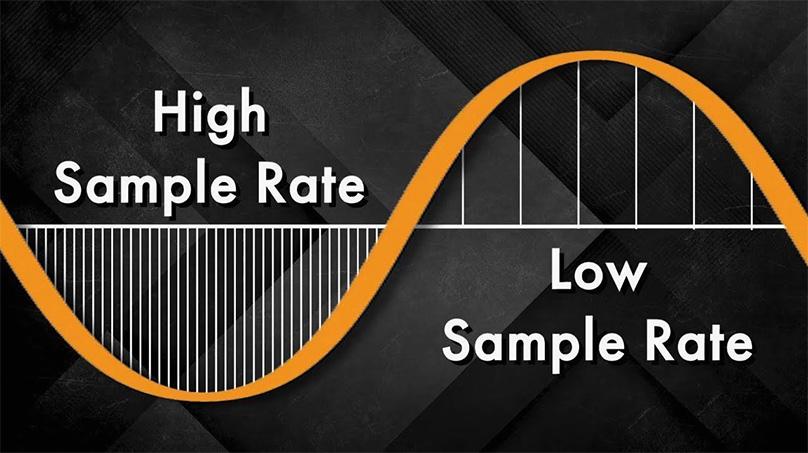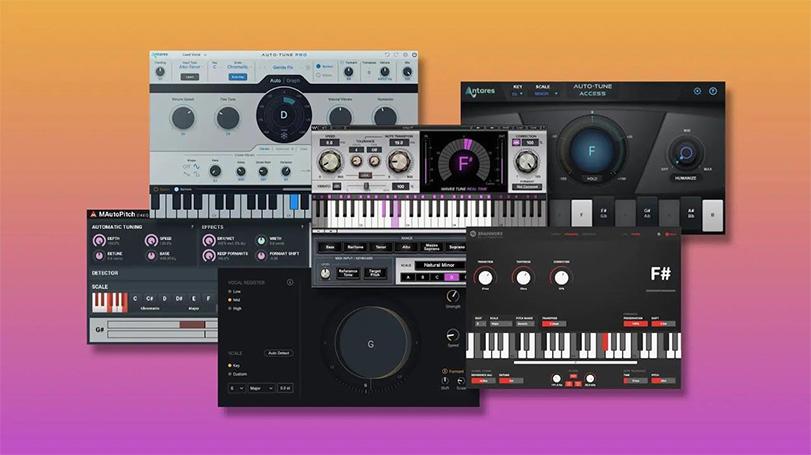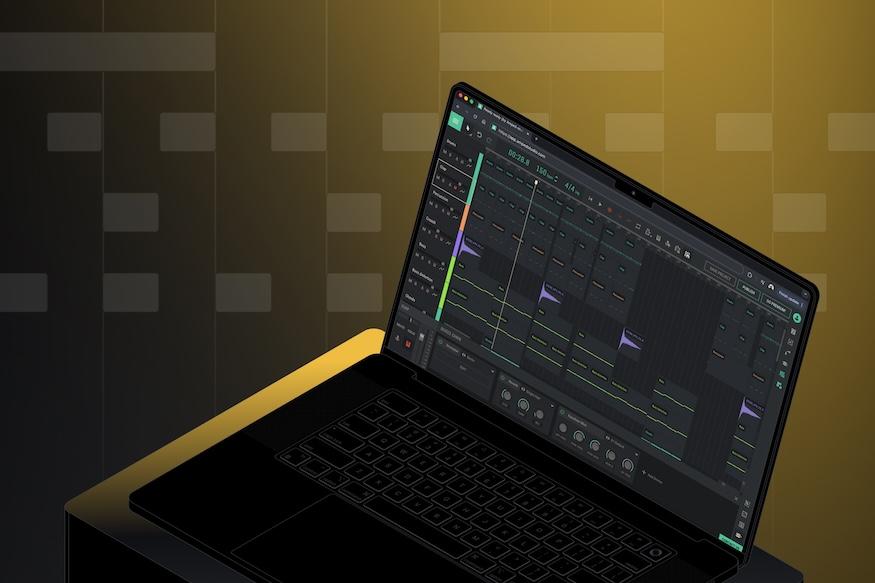Audio compression

Audio compression is one of the key tools in the “arsenal” of a sound engineer. Track mixing is not complete without it. When creating audio files and tracks without proper adaptation, you cannot achieve the optimal format. Even the independent creation of music is related to “compression” to the required values. The resulting file sounds good, takes up less room, improves the audibility of certain musical instruments, makes them more expressive.
For many people compression remains incomprehensible and, supposedly, an optional action when mixing music files. In this article, you will learn about the benefits of compression, why it is used, and how it all works. In which cases, compression helps to achieve an excellent final result.
Compression in music
What is it and what is it used for? Compression can significantly reduce the dynamic range of the signal. Originally the difference between the quietest and loudest sounds is quite significant. Such a tool allows you to determine the minimum and maximum levels, thereby defining not only the averaged volume, but also the type of compression.
Basically, a track is compressed for several reasons:
- average sound levels;
- make the sounding more natural;
- exclude blurrings, “artifacts”;
- select a specific musical instrument;
- achieve a higher quality of the audio file;
- lower its size without losing quality.
Many people ask why an audio file should be run through compression at all. This is improvement in sounding, filling out of the composition in an understandable cover, work on improving its quality. It can be compared to an artist who performs hundreds and thousands of strokes before the picture finds its final form. Compression is esentially a similar process.
What happens if you don’t compress audio files?
Audio compression is especially important when mixing voice and music. It is actively used when working with various synths. Especially when recording a live mix. Almost all modern audio compressors vst or built-in DAW software or have a built-in specific feature that adds a certain tint (“tweak”) to the sounding of the track. In this way, you can “make” the composition sound essentially different – in the required format.
An uncompressed track without compression sounds dry, unnatural, lifeless. Soundtracks are isolated, do not combine with each other. They sound separate. If you do not plan to add complex equalizers, effects, you should address to the described tool. Moreover, it is available to everyone. The composition will become clearer, more understandable, its sounding will be consistent. Listening to such music, regardless of the genre, will be comfortable. Especially on a good acoustic system.
Excessive compression in music production should be avoided. In this case, everything is good moderately. Since intense compression leads to reverse blurring, the sound itself can become very low, inexpressive, dull. While compression allows you to achieve an original and comfortable sounding, if you overdo it with compression, all attempts to make the track more qualitative and better will lose their meaning.
How audio compression works
For the first time, to the process of compressing an audio signal people addressed during the spread of radio. In the first half of the 20th century, it was the main source of information, which for many people replaced reading newspapers. As a result, the owners of radio stations thought about how to make the broadcast signal more comfortable to listen to, while reducing various blurrings. After longtime tests, a method was found to suppress the minimum and maximum audiolevels. In practice, it looked like this – a special device (hardware compressor) was used, which equaled the speaker’s voice, musical and other sound setting in volume.
Experts even then established a significant difference between the human voice (especially in an emotionally high pitch), music, audio effects and other signals. Therefore, a fairly simple solution was found – to equal them relatively to each other. Music compressors became especially popular during performances, concerts and live broadcasts. The sound engineer could not instantly adjust and change the parameters, which could vary every few seconds. Therefore, it was impossible to do without such an automatic control on a mixer or sound intensifier.
The meaning and aim of the song compressor the attenuation of the difference in the maximum and minimum volume of signals, its minimization by attenuating the amplitude swing (above a given cut-off). Thus, all bursts that lead to blurring are cut off.
The principle of work of the first music compressors in comparison with modern analogues has not changed. The device sets all incoming signals, defines their volume level, other parameters, passes through the specified cut-off values. In the initial devices, the compression ratio was set by the manufacturer, it was stationary (as was the speed of suppression, sound restitution). In the current hardware models and software solutions, these settings are set by the user in option.
Many people believe that the audio compressor “cuts off” the range beyond the border of the minimum and maximum levels through a given cut-off value. So it was before. Now the alignment is done. That is, a loud signal becomes lower, and a low signal becomes louder. A music track or any other audio file becomes verified and comfortable to listen to. Often sound engineers and musicians use compression to maintain a higher average volume.
Is it possible to adjust audio compression?
The first devices did not provide such an opportunity. The compression of the amplitude range was carried out according to the values specified by the manufacturer. Nowadays, the most “dangerous” peak transitive signal values can be adjusted manually. What is especially important is to pay attention to the suppression of transients (signals and audios that sound at the beginning of the wave).
There are many options for adjusting compression. 4-5 main ones are pointed out. Information about them is below. If you achieve competent tuning, then in this way you can point certain musical instruments. To make their sound more melodic, pure, natural. Compression works very well with vocals. In a rhythm track, the drums can be made more or less clear. Compression allows you to add bass of the required tone and format.
Quite often you can meet the question – why should I understand the sound compression settings if the plugin (program) does everything for you? The final result depends on the used tool, its parameters and functional abilities. There is no universal solution that fits any genre of music, sound signal, type of audio file. In each case, you need to select a specific device (hardware or software), tune it “for yourself” and for a certain project. A clear understanding of the key principles of compression allows you to understand the impact of compression on sound.
Audio compressor types
First, sound compression and volume averaging was carried out by physical devices. Closer to nowadays, software solutions have been developed in the digitalized environment. These are special plugins that are created by developers for a certain purpose. With the help of such tools, post-tuning of sound is carried out.
Thus, there are two types of sound compressors: software and hardware. A feature of modern versions is the built-in special sounding – a kind of filter with the ability to adjust certain settings.
By type, all music compressors are divided into 4 categories:
- FET;
- VCA;
- optical;
- with variable steepness.
The difference is in the variations of the attenuation of the signal (its compression), as well as the ways for defining the peak moments. Each of the options is determined for a specific task. Optical compressors work on the base of a light source. Variable steepness are tube-based variations in sound tuning. A field effect transistor (FET) allows the device to react faster to a changing signal. Experts using it achieve a more individual and vivid sounding. The voltage amplifiers (VCAs) present in certain compressors better control parameters such as attack and decay, thereby providing smoother and more comfortable sound tuning.
Audio compression parameters and features
There are no clear and established rules in relation to the settings and parameters of compression. Everyone is guided by their own understanding, ear for music, the application of compression to a particular project. In many ways, this is true, since sound and musical sounding is firstly a creative process, and only secondarily a technical one. You should gear up artistic tasks. The main standard and measure is ear – how the track, mix or composition sounds as a result.
For convenience, it is customary to highlight marks. So, the regulation of parameters is carried out on the basis of several main parameters: threshold, ratio, attack, release and knee. Let’s talk about each of them in order.
1. Threshold / threshold level
This parameter determines the level of the input signal. Compression depends on the set value. If this threshold value is too high, then compression will occur more actively. The characteristic is specified in decibels (dB). The parameter depends on both the genre and the type of sound signal.
2. Ratio
Degree or ratio of compression. In practice, this is the difference between the threshold and the signal level. It is exhibited in the order of certain proportions. The most common values are 1:1, 2:1, 4:1, 8:1 and so on. Where 2:1 is a variant of soft and delicate compression, and 20:1 is the so-called extreme compression. With the increasing coefficient the signal is compressed more heavily. In this way, a massive sounding is created.
3. Attack / attack time
The time period during which the compressor must compress audio file when the threshold is exceeded. In simple words, this parameter is called speed of the volume fade. The measurement is in milliseconds. In practice, it looks this way. If the attack value is set to 15 seconds, then the sound will begin to compress music files only 15 seconds after the ratio. The value of the parameter and its speed depend on this: fast, medium, slow attack.
4. Release / release time
An inverse parameter that determines the time interval during which the compressed sound returns to its original state. Essentially it is the opposite of the previous characteristic. When the signal releases below the set value, recovery begins – after the set time period.
5. Knee
Set degree of compression transition is from sharp values (hard knee) to more flexible and comfortable (soft knee).
Do not take the listed compression parameters as the only true or key ones. They are more basic ones. However, others can be pointed out. For example, the input gain, which is responsible for adjusting the level of the input signal to the compressor. If it is weak the threshold value instead of limiting, on the contrary, is increased.
Often sound engineers turn to such a setting as makeup gain. It allows you to compensate for the loss of the signal. The simple explanation is that when you use the above described parameters, the resulting output signal becomes objectively lower, its sounding is heavily averaged. With the help of makeup gain, the volume can be returned to the initial level (before compression).
Music compression example
The purpose of this article is to give a picture of compression and the need for audio compression. Each signal has its own methods, techniques. So, the standard sounding of drums is usually called a barrel. You need to address to compression for align the corresponding track. For a soft barrel, the following set points are recommended:
Threshold: 3-6 dB
Ratio: 3:1 or 4:1
Attack: 4ms
Release: 200ms
For bass, voice, certain musical instruments, certain values are set. You can find them on thematic forums, as well as independently identify them in the liked audio files using special software.
How to work with compression: tips
1. Sense of proportion
The most important recommendation is not to overdo it. Compression is a great tool in the right hands. If you set the parameters incorrectly, apply many of them at the same time, the track will not get better, but even worse. Instruments will sound ordinary and dull, and the composition itself will lose its “highlight”.
You can find many compositions in electronic music, rock, rap, in which one or several parameters are pressed too much (drums, bass, vocals). Then the energy of a certain element is lost. The composition is out of balance. It’s hard to listen to it.
2. Always check the result “output”
Sound compression is a technically specific process. It is worth setting a certain value above the usual level and the whole composition, and not a separate audio track, begins to sound completely different. Therefore, when applying compression, we recommend each time to analyze the final sound (result) by ear.
3. Work with medium volume
When working with a music or other audio file, you should keep the average volume values. If you set it to a value close to the maximum, compression can give a false impression of a great final result. On the contrary, a very low signal will become even more “suppressed”. Unnaturally low and dim.
4. Use the compressor on the entire project
Often beginner musicians, streamers, podcast hosts apply compression only to certain audio tracks. It leads to imbalance. Solo mode is not suitable. Learn to work with the alignment of the entire project. Nevertheless, if you adjust the sound of a certain instrument in such way, be sure to compare it with everything else.
5. Focus on examples.
At first, without sufficient experience, it is difficult to achieve an amazing result. To understand how audio compression works, what settings and parameters to apply – it will help to follow the examples of your field of work. Such orienting points will help to understand compression better, to understand the process from the inside.
Common mistakes
Correct compression requires certain skills, knowledge. Seemingly it is a simple process. However, it’s really not that simple. During track and sound mixing, users often make common mistakes. Here are some of them.
Using extremely fast attack time
Too heavy and too fast compression results in an extreme reduction in dynamic range. The composition is flat, inexpressive. You can compare it to a pancake. There are cases where the compression speed is artificially accelerated – for example, drums. But even here you should be careful.
Applying one compressor to all tasks
The sounding of a guitar module can be better compressed by one compressor, but for drums and vocals, for various reasons, it will not work. The applying of various properly tuned compression tools will make the track more melodic, more effective.
Over compression
You shouldn’t overdo. We wrote about this in the recommendations. Strong sound compression will inevitably lead to significant blurring. Keep track automatisation.
Following only premium solutions
Hardware devices and software plug-ins don’t have to be expensive. There are more affordable, and even free, solutions that are definitely worth to try. Only through practice will you be able to understand which option is best for your project.
Groundlessly many plugins
Unskillful attempts to add everything that is available lead to nothing good. You need to choose certain tools that will help achieve the required effect. Too many plugins can easily undermine your efforts, leading to confusion. In this case, follow the rule: 1-2 compressors are better than 7-8. First, study all the features and characteristics of the main one. And only then switch to analogues.
Compression alone is not enough
If you want to achieve the best sounding, you should not rely on compression only. Compression is good, but moderately. Therefore, we strongly recommend to use various sound tuning variations. Especially with regard to vocals. The speaker at any time can move from a quiet whisper to a loud timbre, turning into a scream. If in such conditions a standard voice compressor is applied to the vocal, then you will achieve only a lifeless and inexpressive sound.
Mistake in the wrong aim
First you need to understand why you are compressing the sound. Compressing an audio file must be conscious. Made with specific settings. How beginners act: somewhere they hear something about compression and rather try to put it into practice – not understanding the essence. As experienced professionals act: first determine what compression is used for, and only after that a specific suitable tool is selected.
One compression for all genres
Musical directions and other sound signals are extremely various. It is wrong to believe that you will find a universal mixing and mastering compressor that you can always use for various needs: recording pop music, preparing an audio performance, mixing a club remix, live performance, phonogram adjustment, and much more. Consider format, style. For jazz music and rock different compression is used.
Now you know more about audio compression
The article provides initial information about the process of compressing an audio file. Given the purpose, the specifics of the project, the artistic and creative intent, it allows you to achieve excellent sounding with a natural selection of the required instruments. When properly compressed, they sound more natural, clear and expressive.
Audio compaction is an important process in the processing and mixing of audio tracks. When mixing them, it is important to reduce the dynamic range of different signals. Modern versions of compressors, in addition to volume averaging, have numerous additional functionality. These include shortening or lengthening of sound “tails”, highlighting certain musical instruments / effects in the track.
When working with compression, it is important not to overdo it. A suitable value and result can be achieved by the parameters. The threshold (threshold) and the ratio (ratio) are responsible for the degree of signal compression. While attack (attack) and recession (release) determine the speed of compaction. To restore the original volume, you can use such a characteristic as signal loss compensation (makeup gain), and for other purposes – a number of other properties.
The more practice, the better the result. Don’t try too hard to highlight a particular track. Even in experimental mode, such a creative idea will be difficult to listen to. Stick to the balance, use not only best audio compressors but different of them, experiment more boldly and you will definitely succeed!










